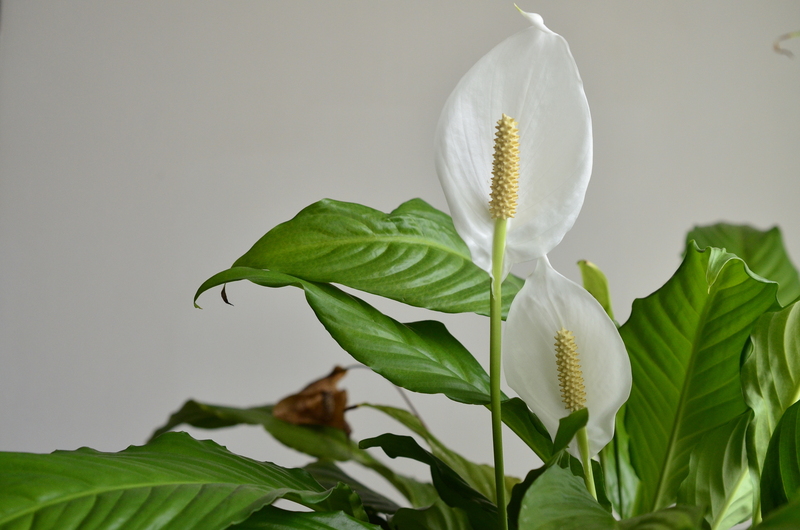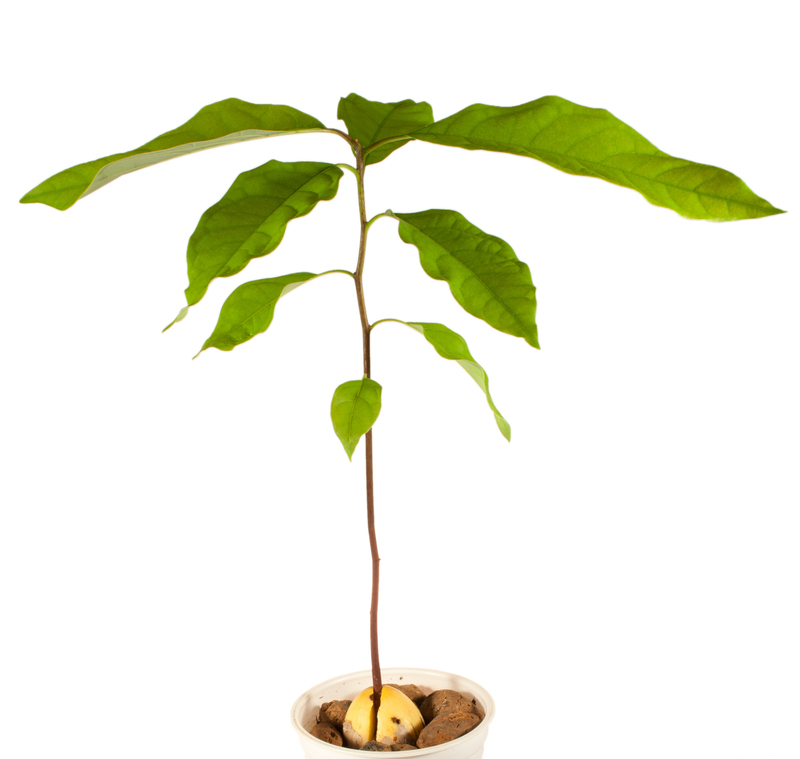Container Gardening: Your Path to a Greener Lifestyle
Posted on 15/09/2025
Container Gardening: Your Path to a Greener Lifestyle
Container gardening is more than just a trend; it's a sustainable and flexible solution for those looking to harmonize their living spaces with nature. Whether you live in a bustling city apartment, a suburban home with a modest yard, or simply wish to bring a touch of green indoors, container gardening offers a convenient pathway to a healthier, environmentally conscious lifestyle.
Why Choose Container Gardening?
Container gardening brings the joys and benefits of growing plants to anyone--regardless of available space or gardening experience. This modern gardening technique allows you to cultivate flowers, herbs, vegetables, and even fruit trees in pots, tubs, or other vessels. Discover some of the most compelling reasons to get started:
- Adaptability: Suitable for small balconies, patios, rooftops, or even windowsills.
- Accessibility: Ideal for beginners or individuals with mobility challenges.
- Environmentally friendly: Reduces urban heat, enhances air quality, and supports pollinators.
- Customizable: Easily rearrange containers to optimize light exposure and design.
- Year-round gardening: With the right approach, you can garden indoors all year long.
Embracing a Greener Lifestyle With Container Gardening
Choosing container gardening aligns with a conscious effort to live more sustainably. By growing your own food and flowers, you reduce your carbon footprint, minimize waste, and foster a stronger connection to the cycles of nature.

Getting Started With Container Gardening
Transitioning to a greener, plant-filled lifestyle doesn't have to be complicated. Here's how to begin your journey:
Step 1: Selecting the Right Containers
Container selection is crucial for successful gardening. Consider these factors as you choose:
- Material: Containers come in terracotta, ceramic, plastic, wood, metal, and fabric. Each offers different benefits in terms of weight, insulation, and aesthetics.
- Drainage: Good drainage is essential--ensure your pots have adequate holes to prevent root rot.
- Size: Larger containers retain moisture longer and give plants more room to grow. Match the pot size to your plant's root system.
- Mobility: Consider lightweight containers if you plan on moving them frequently, especially on balconies or decks.
Step 2: Choosing the Right Soil and Fertilizer
Healthy plants begin with nutrient-rich soil. Always opt for a high-quality potting mix rather than garden soil, as the latter is often too dense for containers.
- Potting mixes: Specially formulated for aeration, drainage, and moisture retention.
- Organic options: Many gardeners prefer organic mixes to further minimize chemical use.
- Fertilizer: Containers need regular feeding since nutrients wash out quickly; choose slow-release or liquid organic fertilizers for best results.
Best Plants for Container Gardens
A multitude of plants thrive in containers, making it easy to build a garden tailored to your preferences and needs. Here are some popular choices, categorized for convenience:
Edible Plants
- Herbs: Basil, parsley, chives, mint, rosemary, thyme
- Vegetables: Tomatoes, peppers, lettuce, radishes, spinach, cucumbers
- Fruits: Strawberries, blueberries, dwarf citrus trees
Ornamental Plants
- Flowers: Petunias, geraniums, pansies, begonias, marigolds
- Foliage: Ferns, hostas, caladiums
- Vines: Sweet potato vine, morning glory, clematis
Indoor Plants
- Air purifiers: Snake plant, pothos, spider plant, peace lily
- Succulents and cacti: Perfect for sunny windowsills with low maintenance needs
Designing Your Container Garden
One of the delights of container gardening is the ability to play with design. Mixing colors, shapes, and textures creates a captivating display.
The 'Thriller, Filler, Spiller' Technique
A popular method among gardeners is the "thriller, filler, and spiller" formula:
- Thriller: A tall, eye-catching focal point (e.g., ornamental grass, dracaena)
- Filler: Medium-height plants that provide bulk and color (e.g., petunias, impatiens)
- Spiller: Trailing plants cascading over the edge (e.g., ivy, lobelia)
Don't be afraid to experiment with different combinations. Consider plant needs in terms of sun exposure and water, grouping those with similar requirements together.
Container Garden Care and Maintenance
The key to a thriving container garden lies in attentive care. Here's how to keep your plants healthy and beautiful:
Watering Wisely
- Frequency: Plants in containers dry out faster than those in the ground. Check moisture daily, especially in warm weather.
- Technique: Water slowly and deeply until it seeps through the drainage holes.
- Mulching: Topsoil covered with organic mulch retains moisture and suppresses weeds.
Feeding and Pruning
- Fertilize: Follow package instructions to avoid overfeeding, which can cause salt build-up.
- Prune and deadhead: Regularly remove spent flowers and damaged leaves to encourage new growth.
Dealing With Pests and Diseases
- Inspection: Regularly check underneath leaves for signs of pests.
- Control: Use natural insecticidal soap or beneficial insects in case of infestations.
- Good hygiene: Clean your pots, tools, and remove dead plant material to minimize disease risk.
The Environmental Benefits of Container Gardening
A commitment to container gardening fosters many ecological advantages. Here's how it contributes to a greener lifestyle:
- Urban biodiversity: Container gardens offer habitat for pollinators and beneficial insects in urban settings.
- Air purification: Plants filter toxins and improve indoor and outdoor air quality.
- Resource efficiency: Growing your own produce reduces dependency on large-scale food systems.
- Water conservation: Container gardens, especially with drip irrigation, use less water compared to traditional lawns or garden beds.
- Reduced waste: Composting kitchen scraps for your containers lowers landfill contributions.
Tips for Successful Container Gardening
Achieve your container garden goals with these expert tips:
- Match plants to your environment: Choose species adapted to the light and climate of your location.
- Avoid overcrowding: Give each plant enough space to develop roots and foliage.
- Rotate containers: Move pots as needed to ensure even growth and light distribution.
- Seasonal refresh: Change out plants with the seasons to keep your garden vibrant year-round.
- Label your containers: Especially useful for edible gardens--mark plant types and sowing dates for easy management.
Creative Ideas for Container Gardens
Unleash your imagination and create a garden that reflects your personality. Here are some innovative approaches:
- Repurpose household items: Old boots, teapots, buckets, and tires make quirky, eco-friendly planters.
- Vertical gardening: Utilize wall-mounted containers or stacked pots for a lush "living wall."
- Herb towers: Stack smaller containers to create a multi-level herb garden perfect for kitchens.
- Hanging gardens: Suspend pots from ceilings, fences, or balconies to maximize limited space.
- Color coordination: Group containers by plant or pot color for visual harmony.
$ Container Gardening for Every Lifestyle
Container gardening is delightfully versatile, adapting to different living situations:
- Apartment dwellers: Balcony, rooftop, or windowsill gardens
- Homeowners: Enhance patios and doorways or fill challenging shady areas
- Gardeners with limited mobility: Raised containers or tabletop planters minimize bending and reaching
- Travelers: Self-watering containers maintain plant health during absences
Container Gardening for Mental Wellness
Engaging with plants is proven to reduce stress, boost mood, and even enhance focus. The simple acts of planting, nurturing, and harvesting become meditative rituals that restore inner balance and promote mindfulness.
Making a Bigger Impact: Sustainable Practices
If you want your container garden to truly embody a greener lifestyle, consider these sustainable practices:
- Use recycled containers: Give new life to old objects as planters.
- Opt for peat-free potting mixes: Peat extraction damages vital wetlands; use coconut coir or compost-based alternatives.
- Start a vermicompost bin: Worm composting efficiently transforms kitchen scraps into rich fertilizer for containers.
- Collect rainwater: Reduce tap water use by watering plants with collected rainwater.
- Native plants: Incorporate native species that support local wildlife and require less intervention.

Common Challenges & Solutions
Troubleshooting Container Garden Issues
- Yellowing leaves: Often a sign of overwatering or poor drainage. Adjust your watering routine and check for clogged drainage holes.
- Leggy growth: Plants are reaching for light. Move to a sunnier location or supplement with grow lights indoors.
- Pest infestations: Isolate affected plants and treat with organic remedies.
- Wilting: Could indicate either under-watering or heat stress. Monitor soil moisture and provide shade during extreme heat.
Container Gardening: Your Eco-Friendly Journey Begins Now
Adopting container gardening as part of your lifestyle means more than adding beauty to your surroundings--it's a participatory step toward a more sustainable future. You'll produce fresh herbs and vegetables, recycle household items, clean your air, and support pollinators, all from the comfort of home.
The path to a greener lifestyle is planted in your own hands. With creativity, care, and a commitment to eco-conscious choices, your container garden can flourish--no matter the size of your space or your level of expertise.
Start Your Greener Lifestyle Today!
Ready to transform your living space with the beauty and benefits of container gardening? Collect your containers, select your favorite plants, and let your journey toward a healthier, more sustainable life begin. Remember, every plant counts in the quest for a greener lifestyle!



